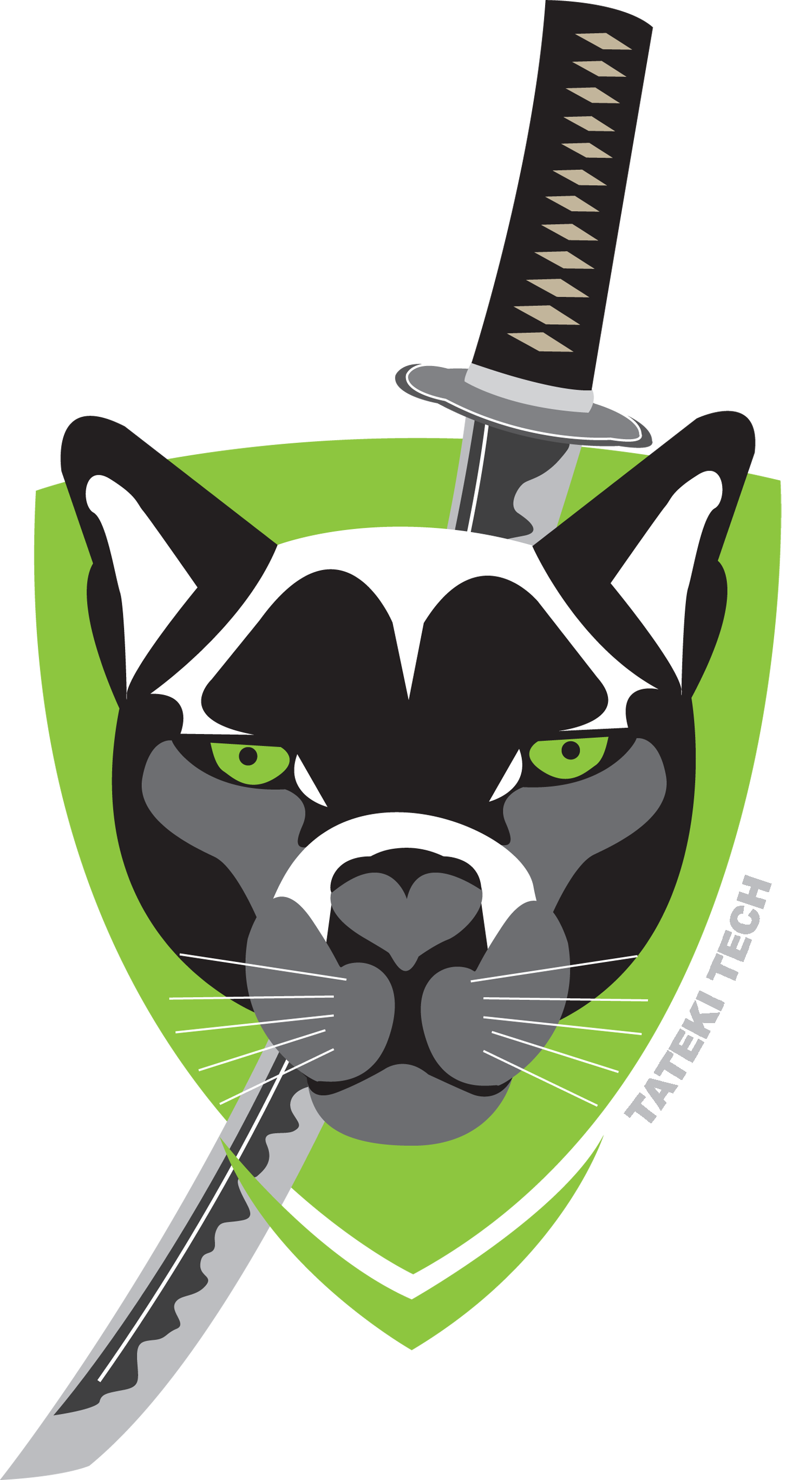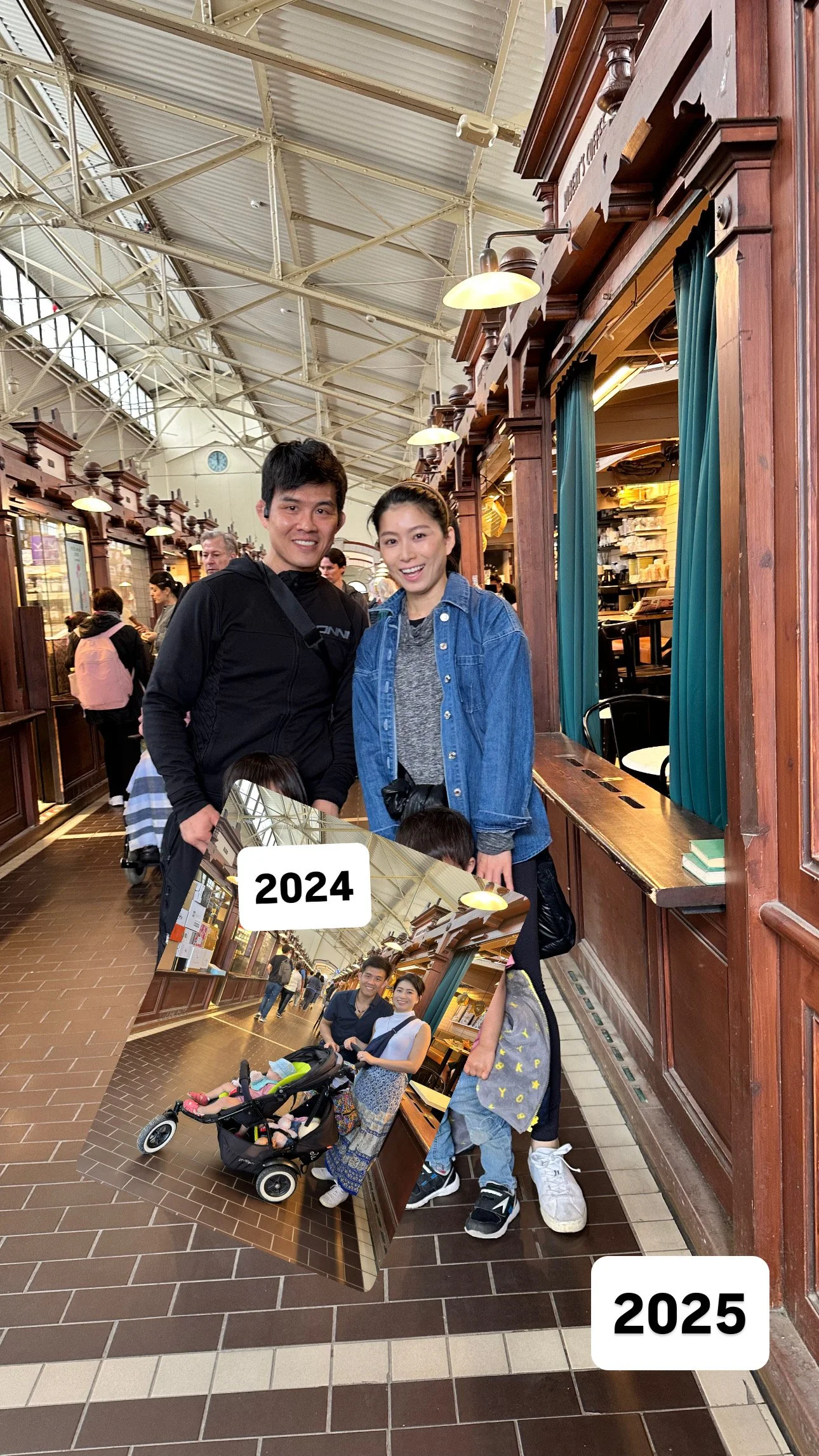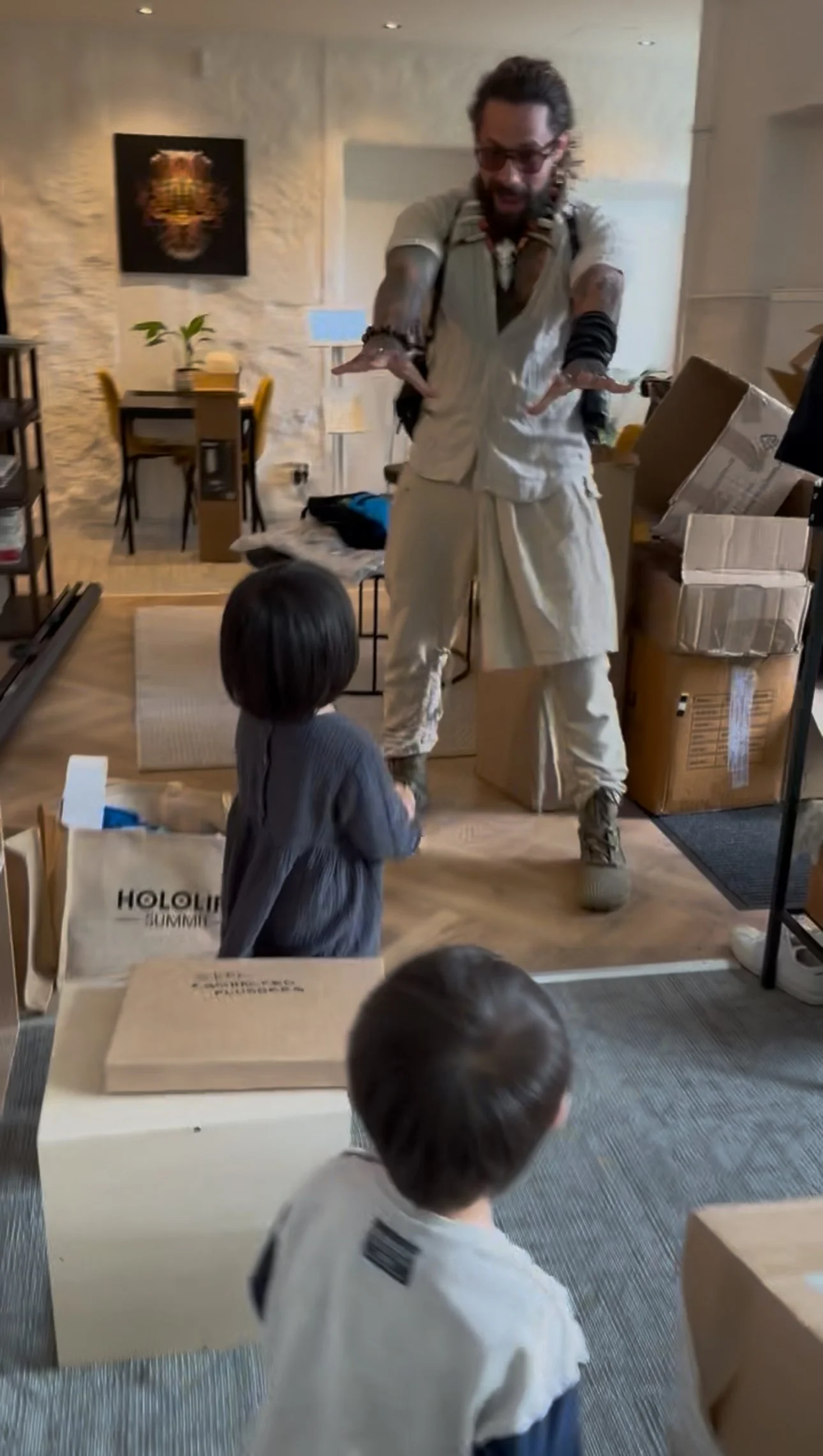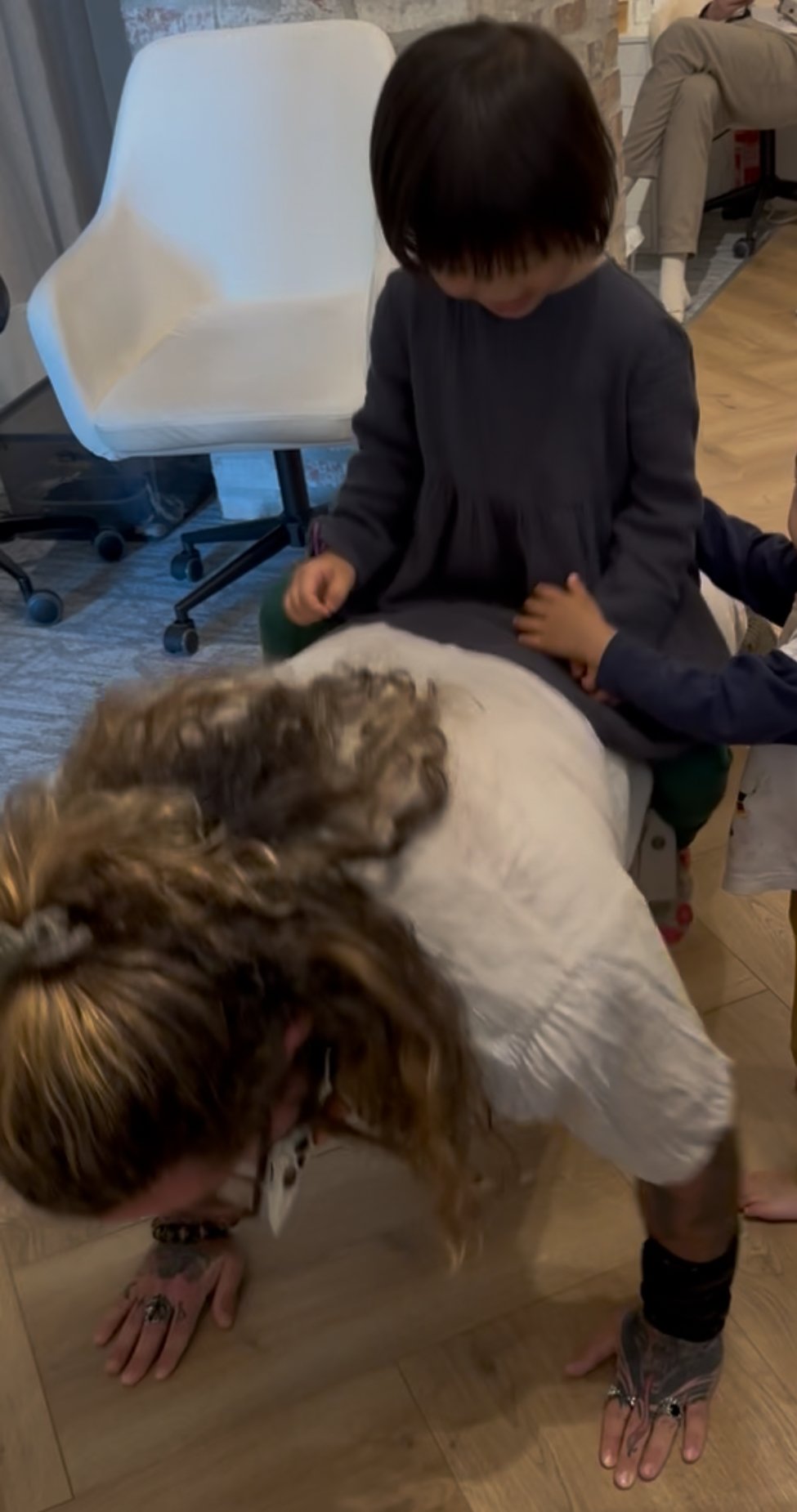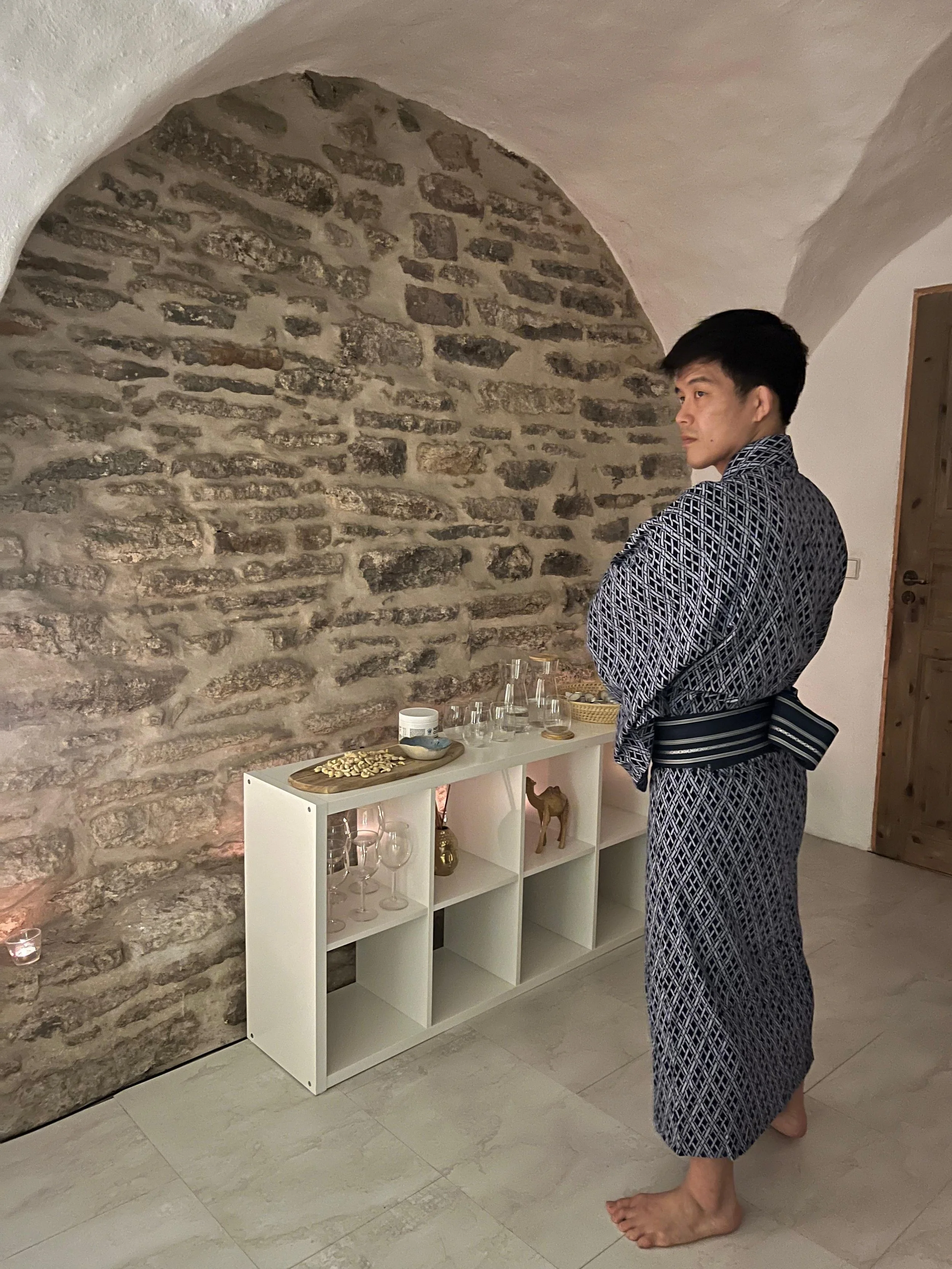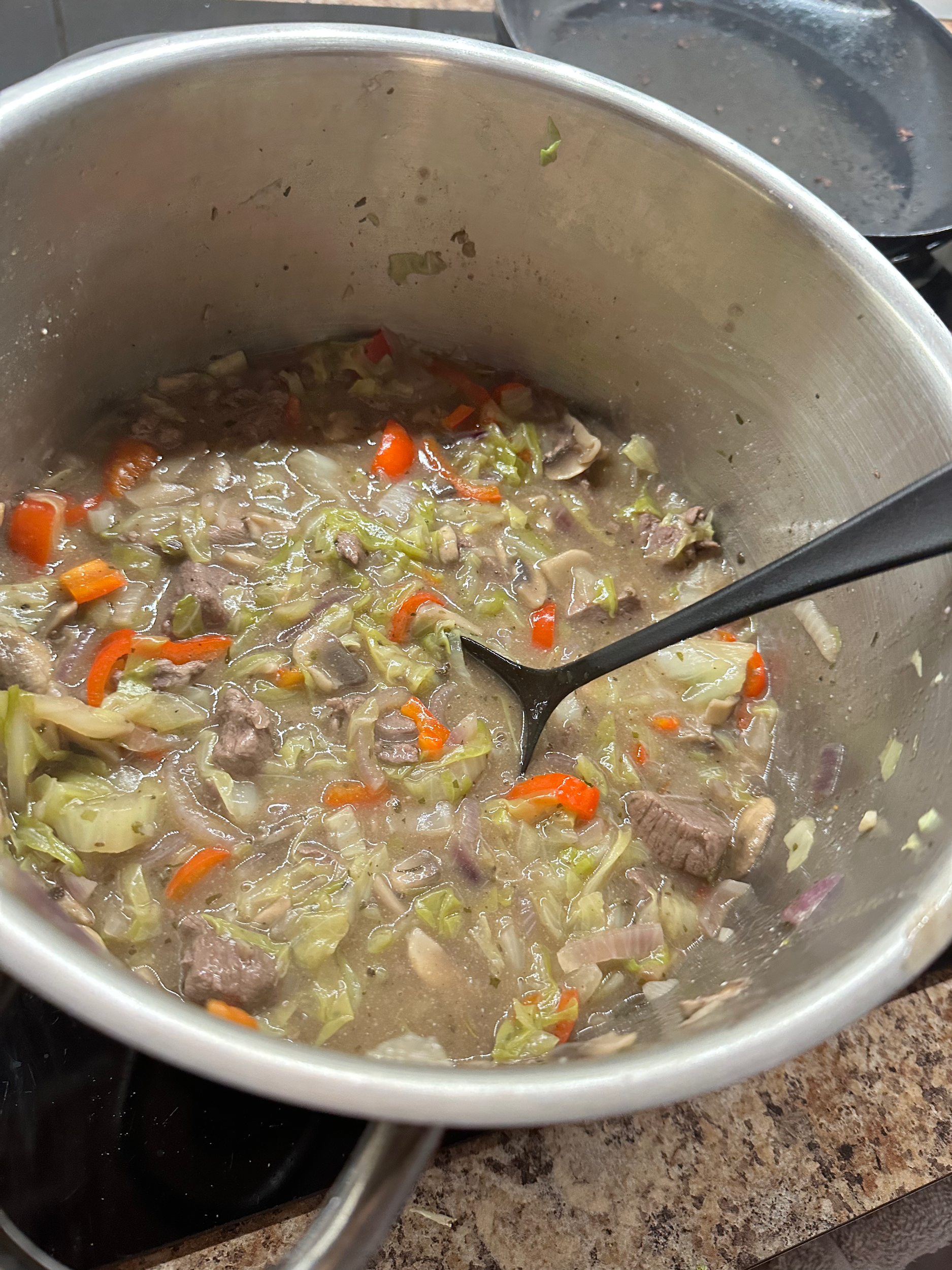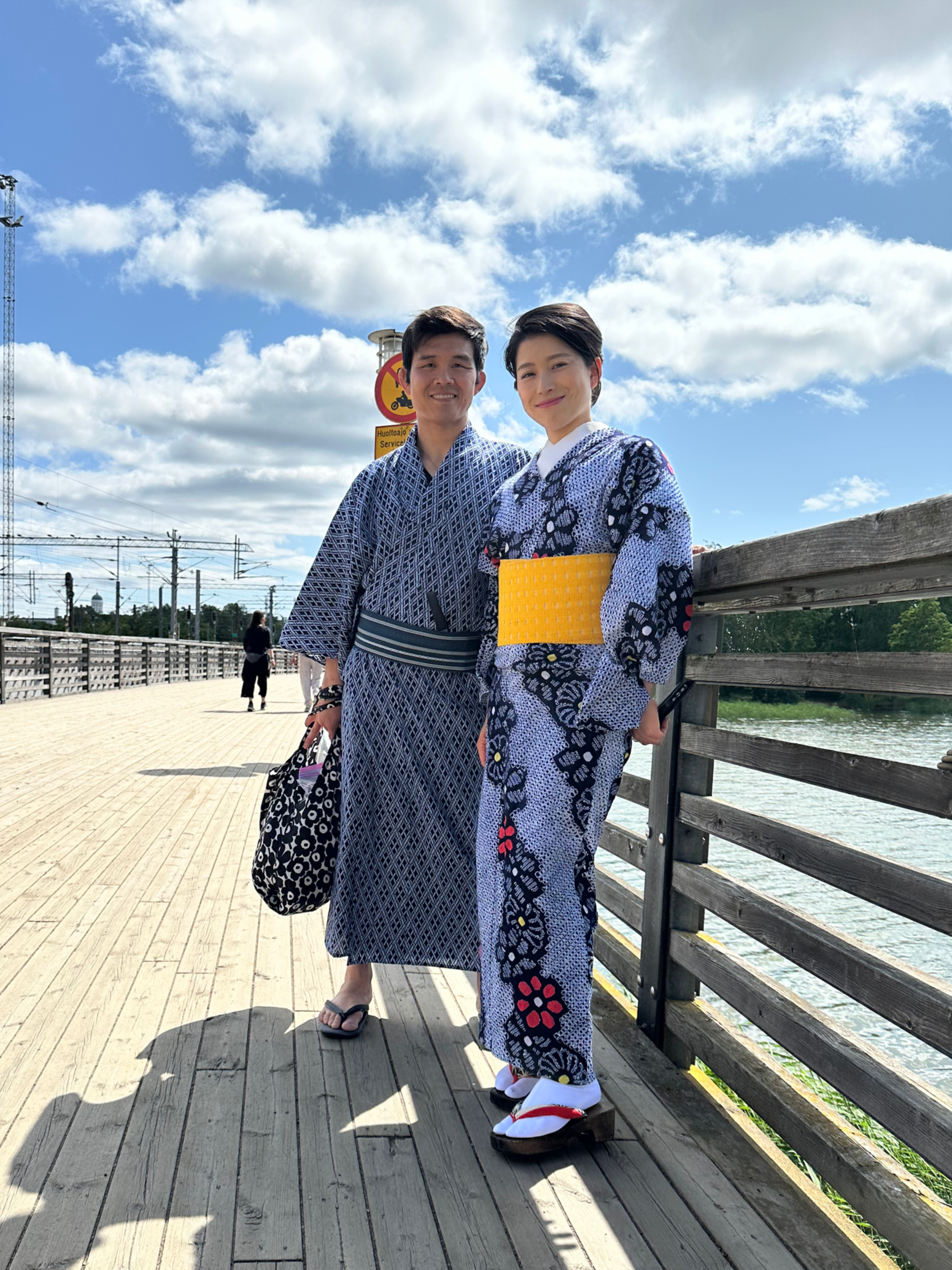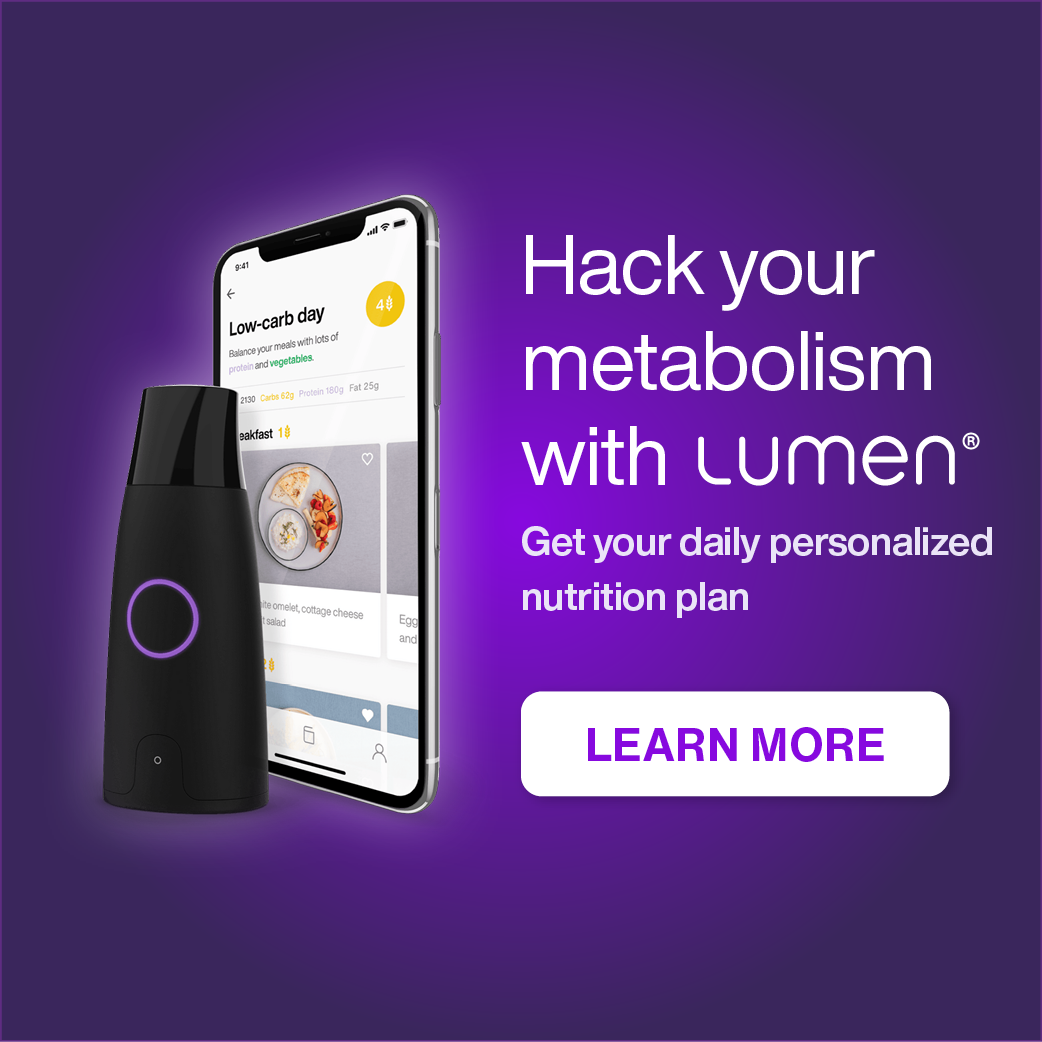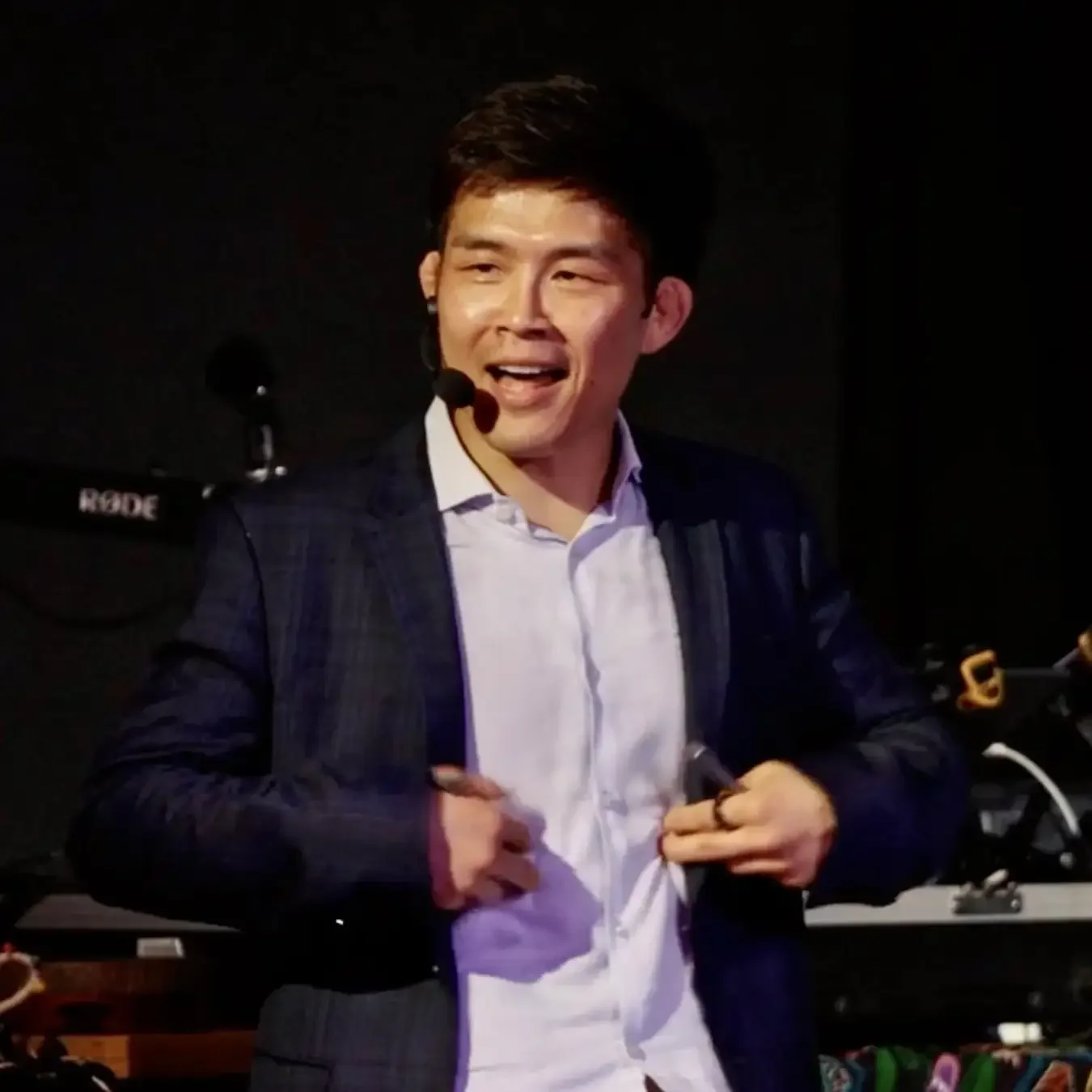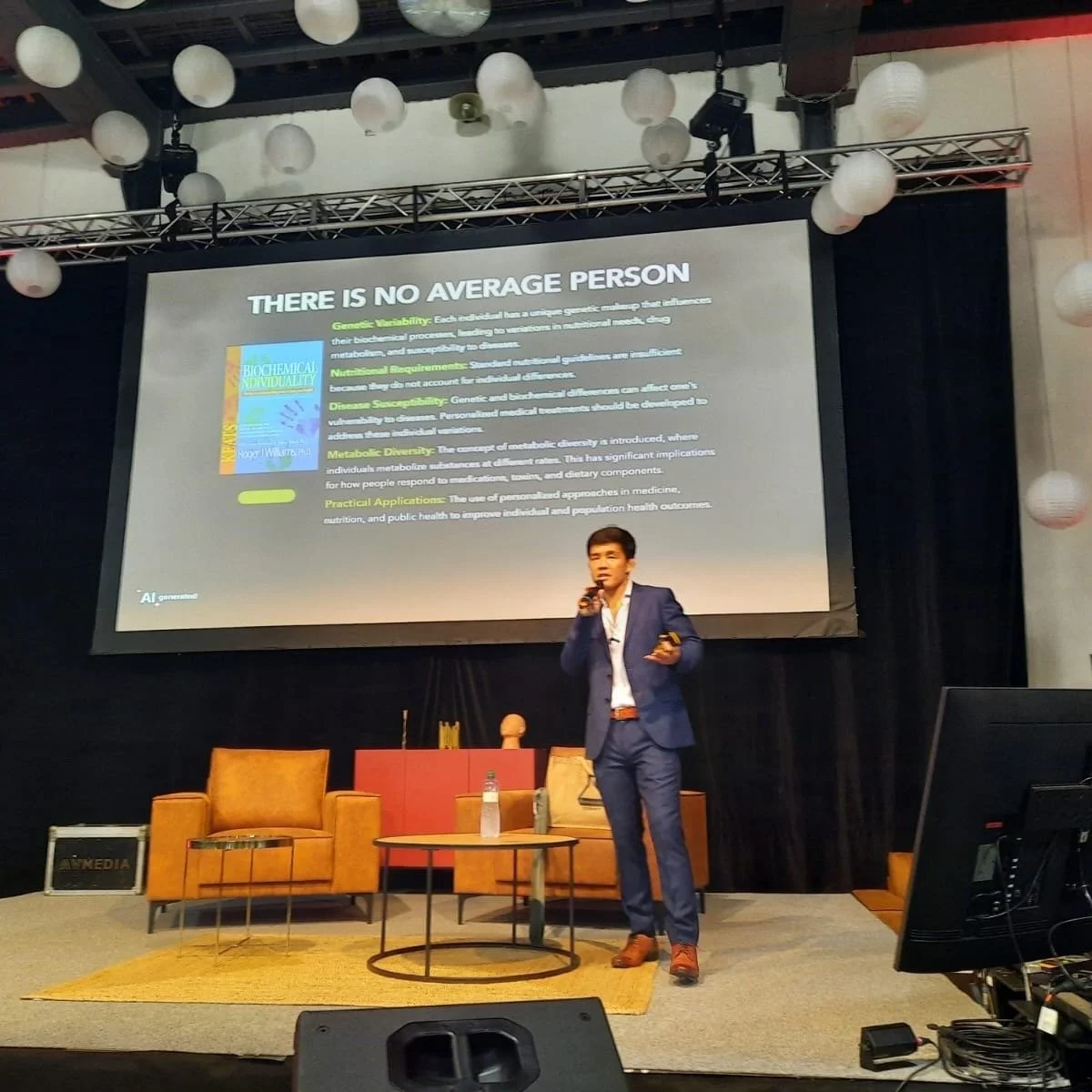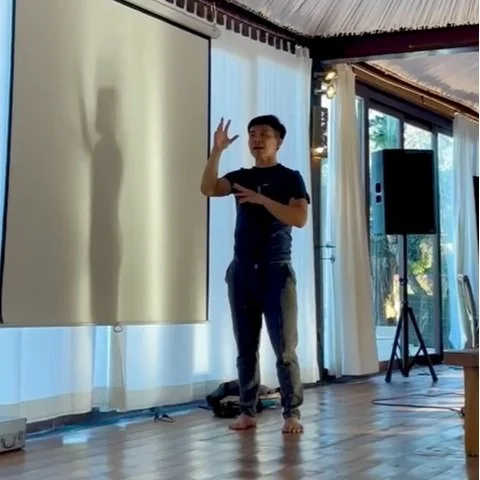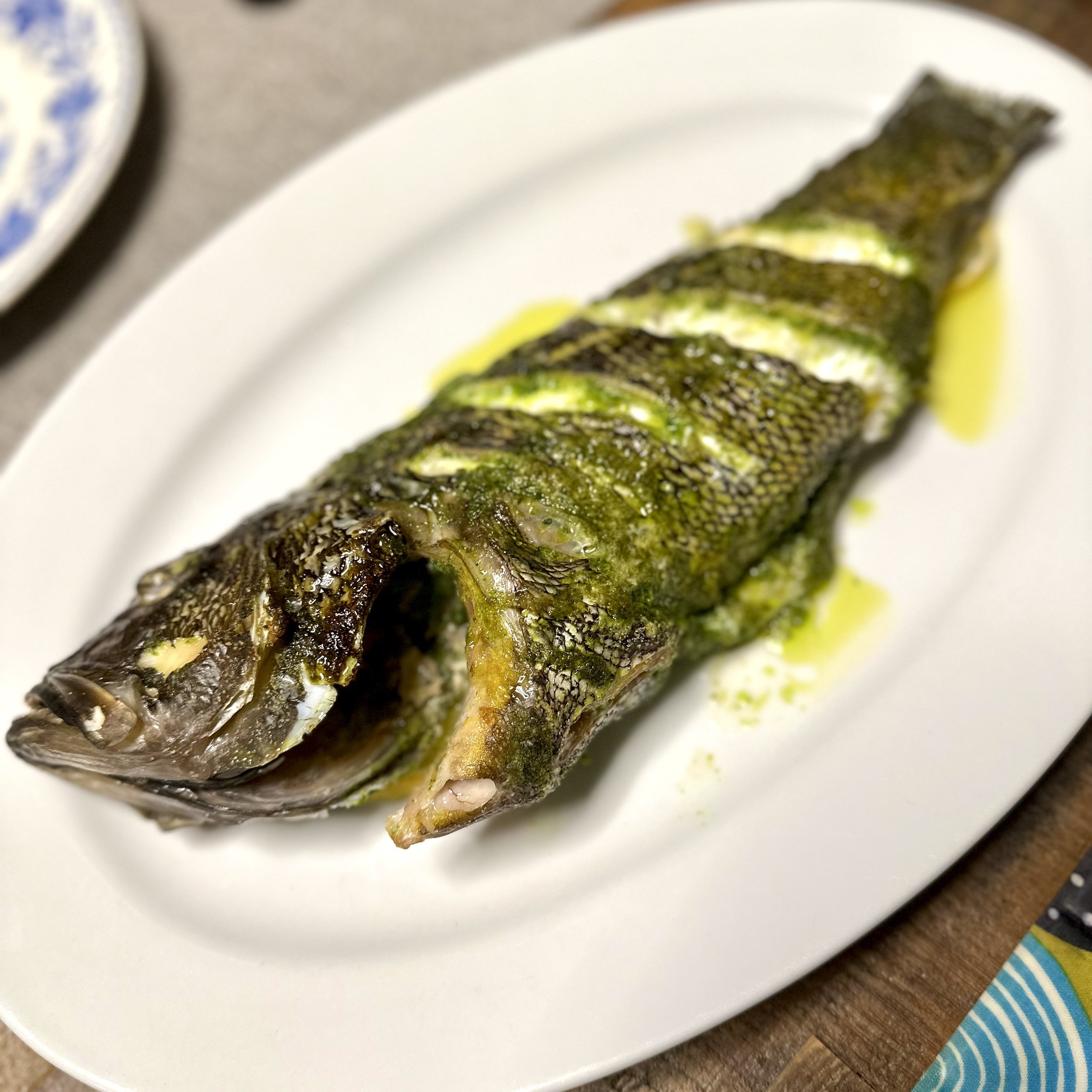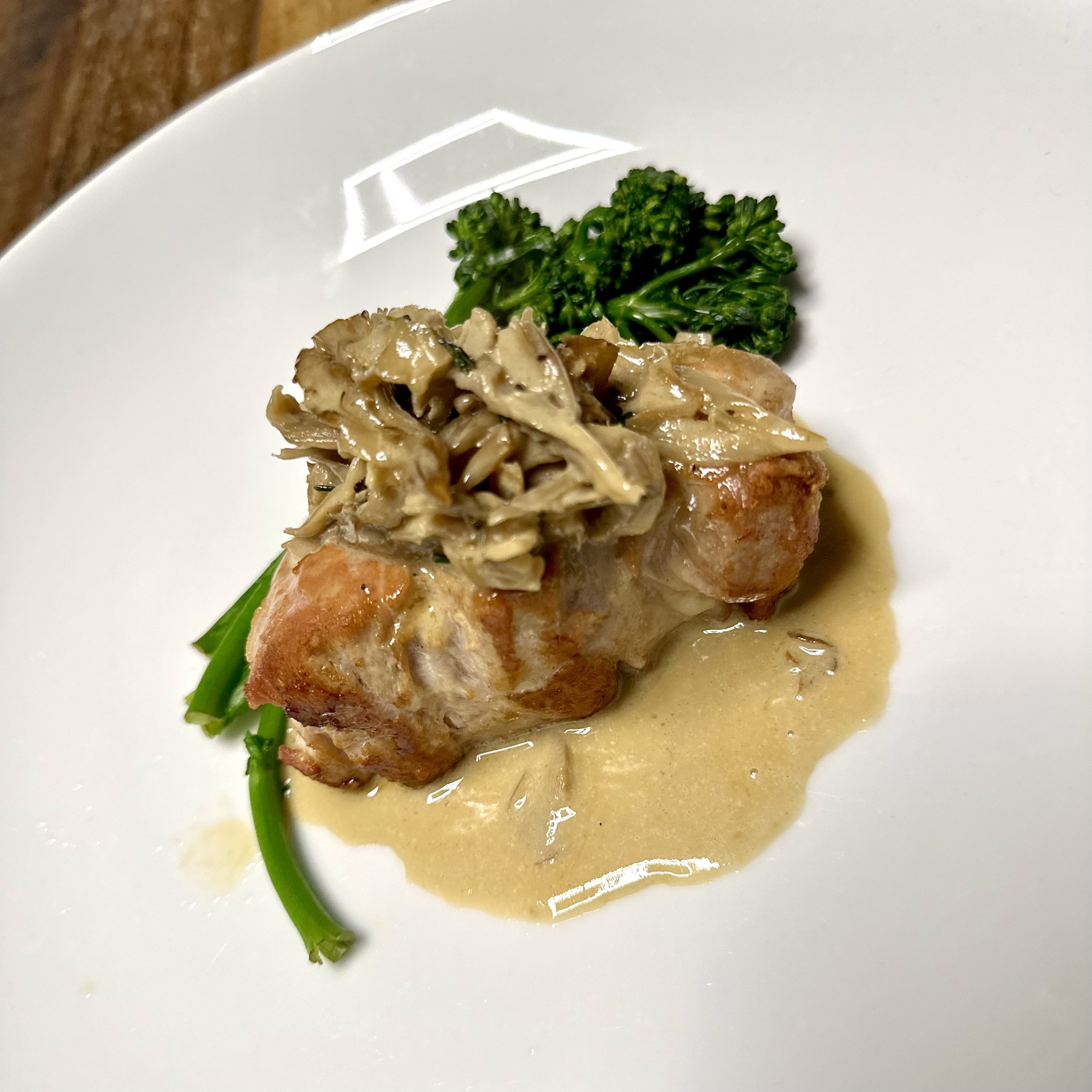From Tallinn to Helsinki: When Your Family Becomes Your Greatest Teacher
When My Kids Met a Real Viking: A Family Journey Through Estonian Saunas and Finnish Forests
"Papa," he whispered in Japanese, "is that a real Viking?"
We were at the Hololife Center HQ in Tallinn, surrounded by post-Summit chaos — boxes everywhere, equipment scattered, the beautiful mess that follows any major event. But my kids didn't see the disorder. They saw Sorin, our "professional best friend" speaker from the Summit, with his authentic Nordic presence, and suddenly they were living in a fairy tale.
BOS>TLL
This wasn't how I'd planned our Estonian family adventure. My wife had just performed a miracle — flying alone from Boston to Tallinn with two small kids. When I picked them up at the airport after my Vireland mastermind, she looked exhausted but triumphant. "We survived," she said, and I knew those two words contained an epic story I'd hear in pieces over the coming days.
But first: Estonian Burger Factory. Our go-to spot in Tallinn. If you read my blog from last year, you know this place has become our family tradition. My kids demolished entire burgers — no small feat for tiny humans who sometimes refuse rice at home.
Kids meet Sorin!
The Office Becomes a Playground
The next morning, I brought my family to help organize the HQ office.
Here's something about kids: they don't see work the way adults do. While my wife and I sorted equipment and packed boxes, our children transformed the space into an adventure. Every box became a fort. Every piece of equipment needed investigation. And when Sorin walked in, the whole room changed.
Play with a Viking
My daughter, usually shy with strangers, walked straight up to him. "Are you strong like a Viking?" she asked in her mix of English and Japanese. Sorin knelt down to her level — all big-muscular-something of him folding down like a gentle giant — and showed her his hands. "Vikings were strong here," he said, pointing to his palms, "but stronger here," touching his heart.
I watched my kids' eyes widen. In that moment, Sorin wasn't just teaching them about Vikings. He was showing them that strength comes in different forms.
No Caption needed
Seven Hundred Years of Steam
The Ohana sauna experience hit different with family.
I've done hundreds of saunas — infrared, Finnish, Russian banya. Part of my biohacking routine, my recovery protocol. But watching my kids experience their first traditional sauna in a 700-year-old building in Tallinn's Old Town? That rewired something.
The space was gorgeous — stone walls that had witnessed centuries, wooden benches worn smooth by thousands of bodies seeking the same thing we were: heat, release, connection. The staff moved with that particular Estonian calm, professional but warm, like they understood they were caretakers of something ancient.
Two hours passed like minutes. We emerged pink, loose, alive in a way that no amount of optimization metrics could measure. Then, in a moment of spontaneous joy, we put on our yukatas — traditional Japanese robes we'd brought — and walked through Tallinn's Old Town.
Picture this: A Japanese family in traditional dress, wandering cobblestone streets older than most countries, past Estonian vendors and Gothic spires. Tourists took photos. Locals smiled. My kids felt like royalty.
Looks she works right here
So fresh So clean
Family walk in Tallinn Old town
The Ferry to Finland
The Baltic Sea between Tallinn and Helsinki is calm in summer, but anticipation made waves in our cabin.
We were heading north — really north — to visit Vessi Einola at his Sahala Estate in Rautalampi. Yes, the same Vessi who makes those Salli ergonomic chairs we use at Hololife. But I was about to discover he's so much more than a furniture innovator.
The train ride from Helsinki stretched through forests that seemed endless. My kids pressed against the windows, counting lakes, spotting reindeer, asking why the sun wouldn't go to bed. Finnish summer — where 11 PM looks like mid-afternoon and children's bedtime arguments gain supernatural power.
From Tallinn to Helsinki
The Land That Teaches
Vessi met us at his estate like an old grandfather we'd always known but never met. Seventy-plus years old, moving with the fluid grace of someone who's never fought against his body.
His property sprawled — forest, fields, a river that whispered through the landscape. But Vessi didn't give us a tour. He gave us an education.
"This," he said, plucking a small berry, "you can eat. But this," pointing to something that looked identical to my untrained eye, "will make you sick. The forest teaches patience. You must learn to see."
My daughter immediately started collecting "good berries" in her pockets. My son found a stick and declared himself "forest warrior." But they both stopped when Vessi showed us the elk footprint pressed into mud near the river.
"How old?" my daughter asked. "Two days," Vessi said. "See how the edges are starting to soften? Rain came yesterday morning. The print was made before that."
I watched my kids absorb this like sponges. No screens. No apps. Just direct transmission of knowledge humans have shared for thousands of years.










The Morning River
That first morning at Sahala, I woke before everyone and walked to the river.
The water was cold — not ice bath cold, but that perfect Finnish river cold that wakes every cell without shocking the system. I stood knee-deep, watching mist rise off the surface, and thought about my kids sleeping in that big house, surrounded by nature instead of Tokyo concrete.
We're so careful with our children's development. Organic food, filtered water, optimal sleep schedules. But when did they last learn from the land itself?
Vessi appeared beside me, silent as morning. We stood there, two fathers from different worlds, watching the river flow. "Children need this," he finally said. "Not education about nature. Education from nature."
Raw Milk and Forest Wisdom
Breakfast at Vessi's table destroyed every optimization protocol I thought I knew.
Marie, his wife, had prepared everything from their land. Berries picked that morning. Oats from their fields. And the milk — oh, the milk. Vessi had taken us to a neighbor's farm at dawn to collect it. Raw, A2, still warm from the cow.
He heated it carefully, slowly, explaining to my kids about enzymes and temperature. "If you heat it too fast, you kill the good parts," he told them. They nodded seriously, like tiny scientists.
Then he added raw cacao, and my son's eyes went wide at the first sip. "It tastes alive," he said. And he was right. It did taste alive in a way our Tokyo convenience store chocolate milk never could.
After breakfast, another forest walk. This time, Vessi taught us to read the trees. "See this moss? Only grows on the north side. If you're ever lost, the trees will show you direction." My daughter immediately checked every tree we passed, building her mental map.
The Smoke Sauna Revelation
The traditional Finnish smoke sauna at Vessi's estate was different from our Tallinn experience. Older. Deeper. The smoke had been curing the wood for generations.
But the revelation came with the peat.
Vessi brought buckets of this dark, rich mud from his bog. "Formed over thousands of years," he explained, spreading it on his arms. "Dead plants becoming medicine."
Get smoke sauna ready!
I'd read about peat's benefits — the humic acids, the minerals, the anti-inflammatory compounds. But watching my kids paint themselves with mud that was older than civilization, laughing as they became "forest monsters," I understood something beyond the biochemistry.
This was connection. Not optimization. Not biohacking. Just humans using what the earth provides, the way we always have.
We sat in that sauna, covered in ancient mud, sweating out modern life. My daughter asked if the mud remembered the plants it used to be. Vessi smiled. "Everything remembers," he said. "That's why we must be careful what we teach it."
Venison and Gratitude
That night, Marie served venison stew. The deer had been hunted by their neighbor, prepared with vegetables from their garden, seasoned with herbs from their forest.
My kids, who sometimes pick at their food in Tokyo, cleaned their plates. "It tastes like the forest," my daughter said. And again, she was right.
Sitting at that table, surrounded by people who lived so differently from our optimized Tokyo life, I felt something shift. We spend so much time trying to hack biology, to optimize performance, to measure and improve. But Vessi and Marie had something we'd lost: integration with their environment.
They weren't trying to conquer nature or their bodies. They were in conversation with both.
Venison Stew
The Heights of Helsinki
Back in Helsinki, real life resumed its comedy.
The Skywheel should have been simple. A Ferris wheel, city views, family photo opportunity. But I'd forgotten one crucial detail: my wife's height phobia.
She didn't remember either until the wheel started moving. Then came the screams. Not subtle gasps — full-volume, grab-the-safety-bar, "WHY DID WE DO THIS?" screams that had other passengers either laughing or concerned.
My kids thought it was the best part. "Mama's so funny!" my son giggled. My daughter held her mother's hand, patting it gently. "It's okay, Mama. Vikings aren't scared of heights."
Sometimes the best family moments aren't in the perfect experiences. They're in the human ones.






Food as Memory
We discovered Herkku Bistro by accident, looking for lunch near Stockmann. But after that first meal, we went back. Twice.
My two-and-half-year-old son destroyed a quarter of a smoked trout by himself. Just sat there, methodically working through this fish like it was his job. The Finnish couple at the next table watched in amazement. "Strong boy," they said. He nodded seriously, mouth full of fish.
Finnish cuisine is criminally underrated. It's not molecular gastronomy or Instagram-perfect presentations. It's real food that tastes like where it came from — forests, lakes, clean air, patience.
At Art Café Taideterassi, overlooking the bay, my colleague Veronika's recommendation from years ago, we had our last Finnish meal. My kids drew pictures of Vikings and saunas on their napkins. My wife, recovered from the Skywheel trauma, laughed at something my daughter said in her emerging Finnish-Japanese-English hybrid language.
The Last Yukata Day
Our final day in Finland, we wore our yukatas again. Walking through Helsinki in traditional Japanese dress, my kids collecting their last memories.
An elderly Finnish woman stopped us. "Beautiful family," she said, then looked at my kids. "You're learning something special. Not everyone gets to walk between worlds like this."
She was right. My children were growing up as bridges — between East and West, tradition and innovation, nature and technology. The Estonian saunas and Finnish forests weren't just experiences. They were teachings.
What My Kids Taught Me
Three months later, back in Tokyo, my son still talks about the "Viking man" who showed him that strength lives in your heart. My daughter checks trees for moss, even in Yoyogi Park, still navigating by Vessi's forest wisdom.
But here's what struck me most: They never asked for WiFi at Vessi's estate. Never complained about missing their tablets. They were too busy learning from horses, collecting berries, painting themselves with mud older than memory.
We talk about optimizing our children's development. Best schools, perfect nutrition, cognitive enhancement programs. But what if the optimization they need is actually de-optimization? What if they need less structure and more forest? Less measurement and more mud?
The Question That Remains
I keep thinking about what Vessi said while we stood in that morning river: "Children need education from nature, not about nature."
How much of what we're teaching our kids is about life versus from life? How much is theoretical versus lived? How often do we let them learn from something older and wiser than any curriculum?
My kids met a Viking and learned that strength can be gentle. They covered themselves in thousand-year-old mud and understood that medicine doesn't always come in bottles. They ate food from the land that fed them and discovered what nourishment really means.
The world is moving fast. Technology, AI, optimization, enhancement — it's all accelerating. But maybe what our kids need most is what those Estonian saunas and Finnish forests provided: connection to something timeless. Roots that go deeper than any disruption can reach.
What ancient wisdom are your kids missing while we optimize their futures?
If you've found ways to give your children both — modern tools and timeless teachings — I'd love to hear your story. Because raising kids between worlds isn't just possible. It might be essential.
NEWS
OPTIMIZED LIFE
TATEKITCHEN
BLOG
